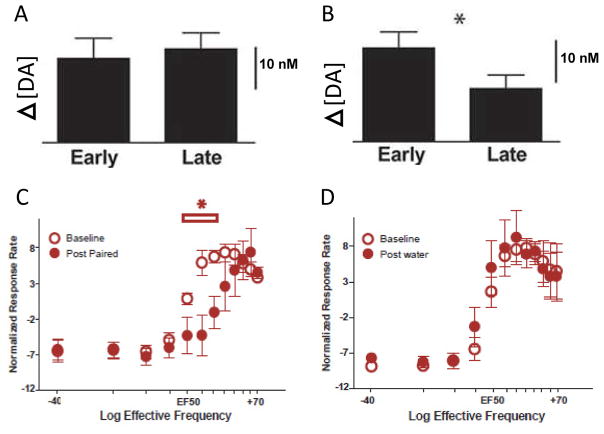Figure 6.
Dampened dopamine release during the 45-min period before cocaine availability and revealed via ICSS. A: Average dopamine concentration (mean ± SEM) in the baseline period for all rats receiving the unpaired tastant is stable across trials (early vs. late), p < .05. B: Dopamine concentration decreased significantly across trials for rats receiving the cocaine-predictive taste cue. *Significant difference p < .05. C: Baseline ICSS threshold curves were established (open circles, mean ± SEM), then rats received infusions of the cocaine-paired tastant, and the curves were redetermined (closed circles). The cocaine-paired tastant right-shifted ICSS thresholds significantly. *Significant differences in ICSS response rates. D: Baseline ICSS threshold curves were established (open circles), and then all rats received infusions of water and the curves were redetermined (closed circles). Water infusions did not change ICSS response rates. Figure modified from Wheeler et al. (2011) with permission from Elsevier.

